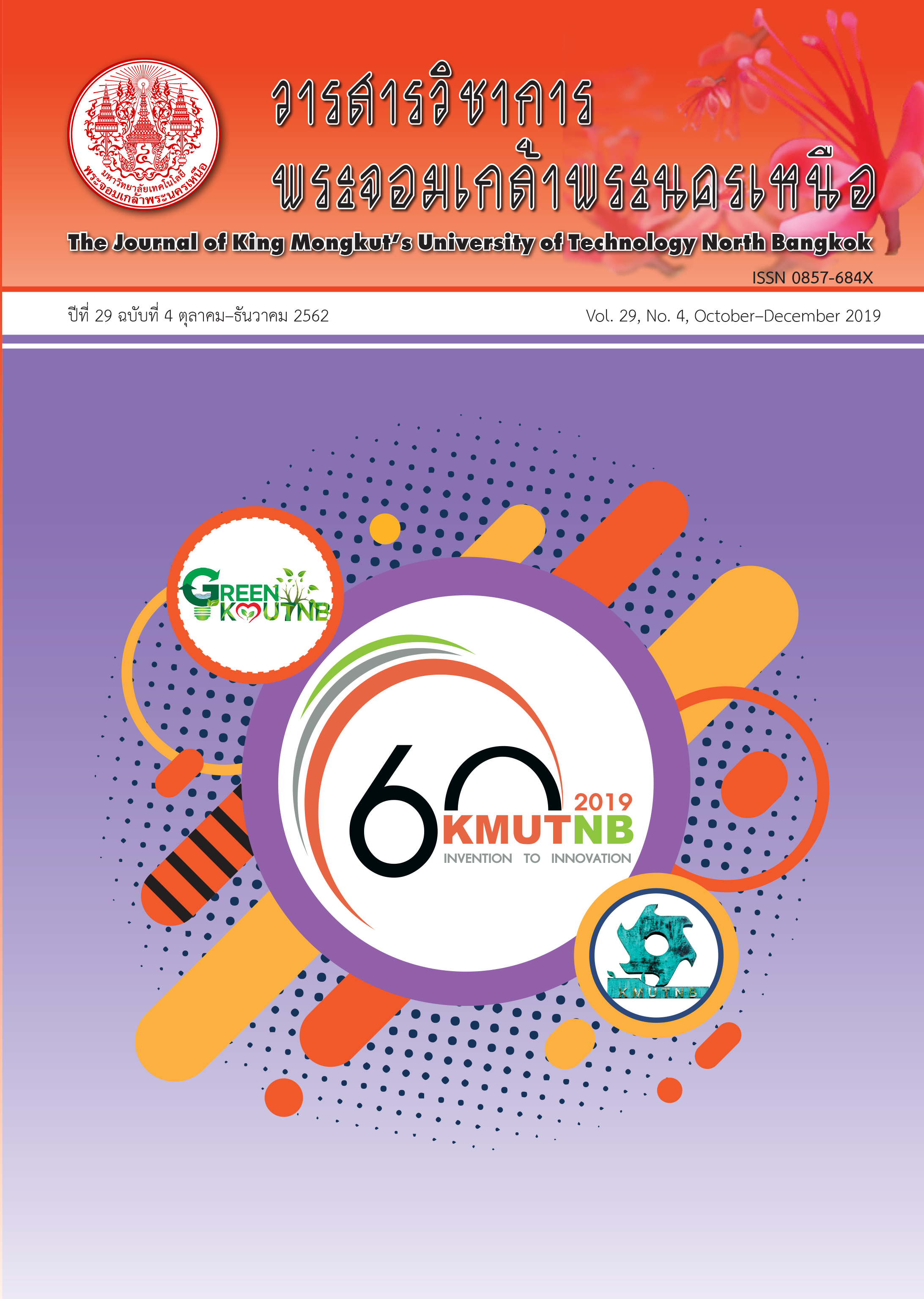การจัดการใช้ไฟฟ้าในกลุ่มตัวอย่างศึกษาสำหรับโรงสีข้าว โรงแรม และโรงน้ำแข็ง
Main Article Content
บทคัดย่อ
This research aims to study a potential of electricity cost saving by power consumption management of the medium enterprises according to the grid at the voltage level of 22–33 kV. The study is conducted by considering for the 2016 tariff rate. To demonstrate the potential of bill saving, the electricity bills of 36 medium enterprises, which are 12 hotels, 12 ice factories, and 12 rice mill factories, in the north of Thailand are analyzed and provided as the management guideline. From the study of the electricity tariff, the results show that any medium enterprise with the electricity energy ratio (kWhP/kWhTotal) lower than 0.4 or the load factor lower than 0.09 always give the electricity bill under TOU rate lower than that under Two-part-tariff. In order to the enterprises using tariff structure based on TOU rate can reduce the energy cost up to a maximum of 0.25 baht/unit, the electric energy ratio (kWhP/kWhTotal) has been decreased by 20%. The appropriate load factor for controlling the demand charge is directly proportional to power ratio (PPeak/P). Then, the appropriate load factor of PPeak should be over 0.6. According to the analysis of those electricity bill samples, the enterprises that use Two-part-tariff show a significant potential to reduce the electricity cost by changing the electricity rate to TOU rate. Furthermore, all samples also provide a high potential to reduce the electricity cost by increasing load factor.
Article Details
บทความที่ลงตีพิมพ์เป็นข้อคิดเห็นของผู้เขียนเท่านั้น
ผู้เขียนจะต้องเป็นผู้รับผิดชอบต่อผลทางกฎหมายใดๆ ที่อาจเกิดขึ้นจากบทความนั้น
References
[2] J. Nuritanont, “Consideration of suitable rate selection of electricity charge for medium industries,” Engineering Transactions, vol. 1, no. 2, pp. 181–185, 1998 (in Thai).
[3] A. Kunchornrat, “Suitability in using TOD and TOU rate for commercial buildings,” M.S. thesis, Department of Energy Management Technology, Faculty of Engineering, King Mongkut’s University of Technology Thonburi, 1999 (in Thai).
[4] P. Loganthuri and S. A. Subbulakshmi, “New proposal to implement energy management technique in industries,” in Proceedings International conference on Computing, Electronics and Electrical Technologies (ICCEET), Sivagangai, India, 2012, pp. 495–500.
[5] Tennessee Valley Public Power Association Research & Development. (1994). Distribution System Loss Reduction Manual. [Online]. Available: https://www.alexanderpublications.com/products/733b
[6] Power Planet-Electrical Management Systems. (2018, July). Power Planet. Power Planet - Electrical Management Systems. Fullerton, California [Online]. Available: http://www.demandcharge.com/Web_Pages/Articles/Electrical_Load_Factor.html.
[7] S. Kulwatnanchai, “Training documents; Total energy management activities to raise the level of energy efficiency for industry (Training Class 8th),” Department of Industry Promotion. 2008.
[8] Tennessee Valley Public Power Association Research & Development. (1994). Distribution System Loss Reduction Manual. [Online]. Available: https://www.alexanderpublications.com/products/733b
[9] R. Diewvilai, R. Nidhiritdhikrai, and B. Eua-arporn, “Impacts of demand side management on reserve margin for generation system planning,” Journal of Energy Research, vol. 9, no. 1, pp. 17–29, 2012 (in Thai).
[10] Policy and Statistical Technique Division. (2012). Sampling and Estimation Technique. National Statistical Office.Bangkok, Thailand [Online]. Available: service.nso.go.th/nso/nsopublish/Toneminute/files/55/A3-16.pdf
